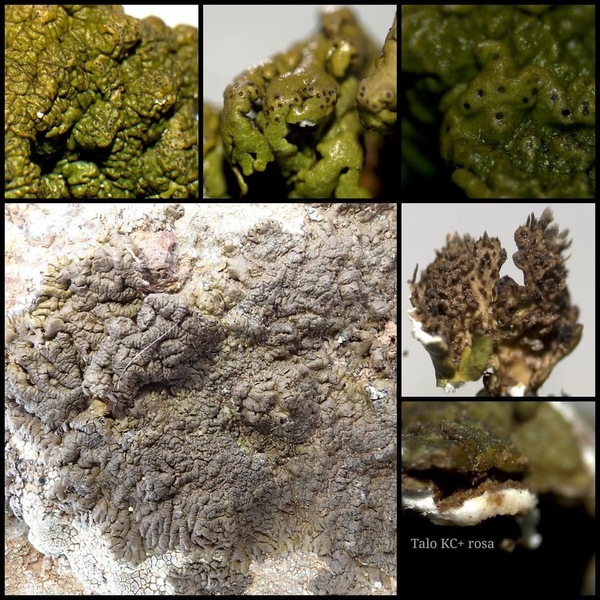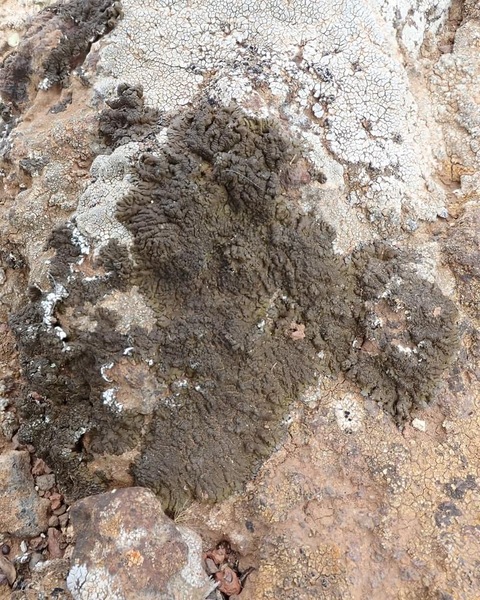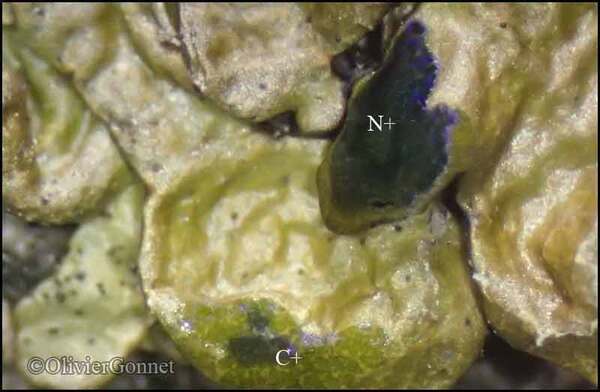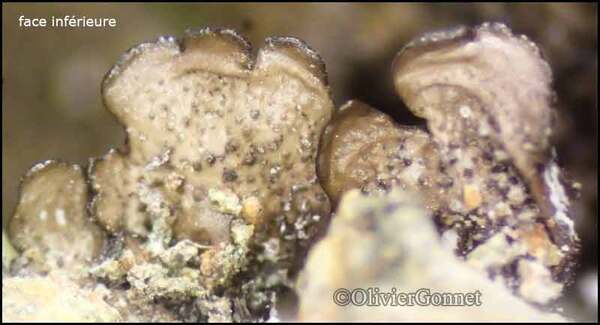Xanthoparmelia luteonotata (J. Steiner) O. Blanco, A. Crespo, Elix, D. Hawksw. & Lumbsch
Taxon, 53: 968, 2004. Basionym: Parmelia luteonotata J. Steiner - Verh. zool.-bot. Ges. Wien, 12: 472, 1902.
Synonyms: Neofuscelia luteonotata (J. Steiner) Essl.; Parmelia pulla subsp. luteonotata (J. Steiner) Clauzade & Cl. Roux
Distribution: N - TAA (Giordani & al. 2003), Lig (Giordani & al. 2003). C - Tosc (Giordani & al. 2003), Laz (Giordani & al. 2003), Sar (Giordani & al. 2003). S - Cal (Giordani & al. 2003), Si (Giordani & al. 2003).
Description: Thallus foliose, heteromerous, dorsiventral, loosely to moderately adnate, forming up to 10 cm wide, sometimes coalescing rosettes. Lobes (0.5-)1-3 mm wide, sublinear to irregular, discrete to imbricate, rarely developing subfruticose branches. Upper surface brown to dark brown, uneven and rugose; lower surface pale, tan to pale brown, moderately to densely rhizinate; rhizines simple, to 0.5 mm long. Upper cortex paraplectenchymatous, with a pored epicortex, the cell walls with Xanthoparmelia-type lichenan; medulla white; lower cortex paraplectenchymatous. Apothecia usually numerous, lecanorine, sessile to stipitate, to 4 mm across, with a brown disc and a smooth thalline margin. Epithecium brown; hymenium and hypothecium colourless; paraphyses simple; hypothecium colourless. Asci 8-spored, clavate, the K/I+ blue tholus penetrated by a faintly amyloid apical cushion with parallel or diverging flanks, the wall K/I-, surrounded by a K/I+ blue outer layer, Lecanora-type. Ascospores 1-celled, hyaline, ellipsoid, 8-11 x 4-7 µm. Pycnidia common, immersed. Conidia weakly dumbbell-shaped 4-7 x c. 1 µm. Photobiont chlorococcoid. Spot tests: upper cortex K-, C-, KC-, P-, N+ blue green, UV-; medulla K-, C-, KC- or KC+ pink, P-. Chemistry: medulla with divaricatic or stenosporic acids, with or without gyrophoric acid as an accessory substance.
Note: a mainly Mediterranean species of sun-exposed siliceous rocks wetted by rain, occurring also in dry-warm sites of the Alps; it was not always distinguished from X. pulla in the Italian literature, so that the total distribution is poorly known.
Growth form: Foliose, broad lobed
Substrata: rocks
Photobiont: green algae other than Trentepohlia
Reproductive strategy: mainly sexual
Commonnes-rarity: (info)
Alpine belt: absent
Subalpine belt: absent
Oromediterranean belt: absent
Montane belt: very rare
Submediterranean belt: absent
Padanian area: absent
Humid submediterranean belt: very rare
Humid mediterranean belt: rare
Dry mediterranean belt: rare
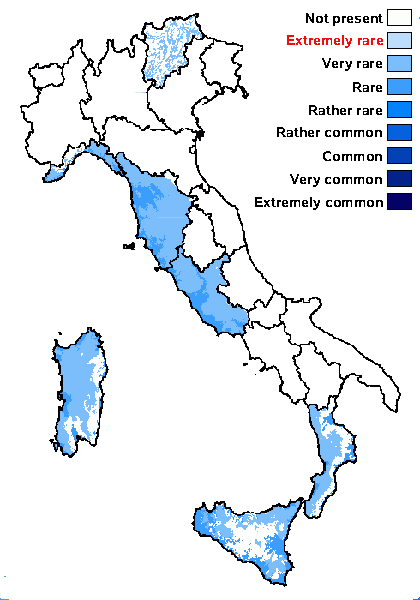
Predictive model
Herbarium samples


P.L. Nimis; Owner: Department of Life Sciences, University of Trieste
Herbarium: TSB (10508)
2001/12/05
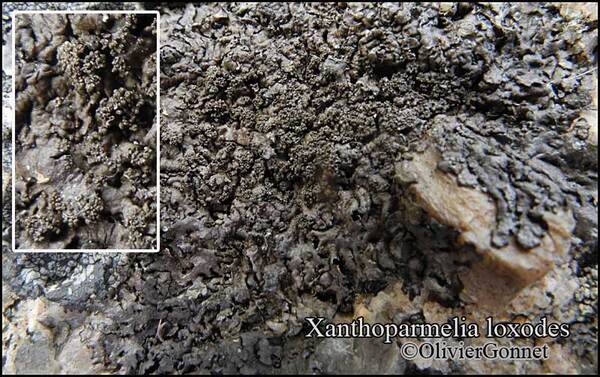
Courtesy Danièle et Olivier Gonnet - Source: https://www.afl-lichenologie.fr/Photos_AFL/Photos_AFL_X/Textes_X1/Xanthoparmelia_luteonotata.htm
France, octobre 2018 - Ajaccio, Corse
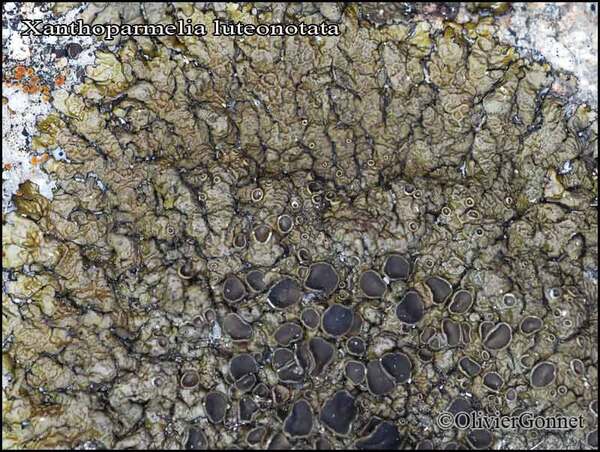
Courtesy Danièle et Olivier Gonnet - Source: https://www.afl-lichenologie.fr/Photos_AFL/Photos_AFL_X/Textes_X1/Xanthoparmelia_luteonotata.htm
France, octobre 2018 - Ajaccio, Corse
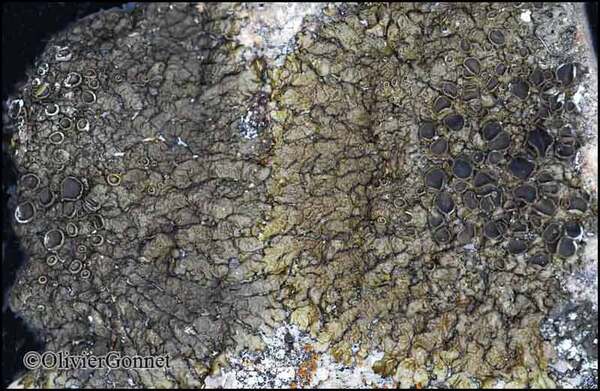
Courtesy Danièle et Olivier Gonnet - Source: https://www.afl-lichenologie.fr/Photos_AFL/Photos_AFL_X/Textes_X1/Xanthoparmelia_luteonotata.htm
France, octobre 2018 - Ajaccio, Corse
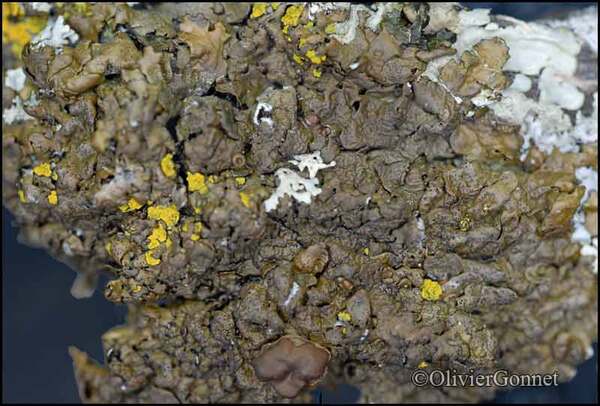
Courtesy Danièle et Olivier Gonnet - Source: https://www.afl-lichenologie.fr/Photos_AFL/Photos_AFL_X/Textes_X1/Xanthoparmelia_luteonotata.htm
France, octobre 2018 - Ajaccio, Corse
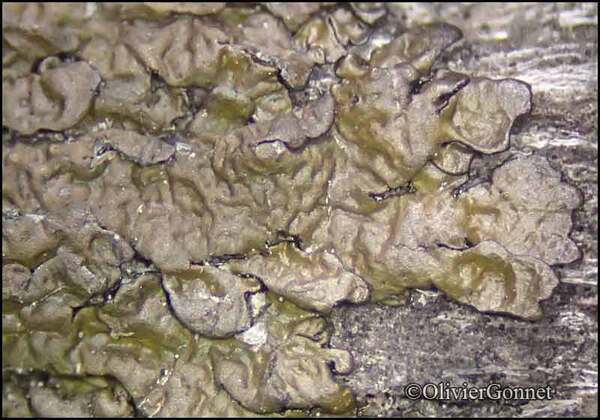
Courtesy Danièle et Olivier Gonnet - Source: https://www.afl-lichenologie.fr/Photos_AFL/Photos_AFL_X/Textes_X1/Xanthoparmelia_luteonotata.htm
France, octobre 2018 - Ajaccio, Corse
Growth form: Foliose, broad lobed
Substrata: rocks
Photobiont: green algae other than Trentepohlia
Reproductive strategy: mainly sexual
Commonnes-rarity: (info)
Alpine belt: absent
Subalpine belt: absent
Oromediterranean belt: absent
Montane belt: very rare
Submediterranean belt: absent
Padanian area: absent
Humid submediterranean belt: very rare
Humid mediterranean belt: rare
Dry mediterranean belt: rare

Predictive model
| Herbarium samples |


P.L. Nimis; Owner: Department of Life Sciences, University of Trieste
Herbarium: TSB (10508)
2001/12/05

Courtesy Danièle et Olivier Gonnet - Source: https://www.afl-lichenologie.fr/Photos_AFL/Photos_AFL_X/Textes_X1/Xanthoparmelia_luteonotata.htm
France, octobre 2018 - Ajaccio, Corse

Courtesy Danièle et Olivier Gonnet - Source: https://www.afl-lichenologie.fr/Photos_AFL/Photos_AFL_X/Textes_X1/Xanthoparmelia_luteonotata.htm
France, octobre 2018 - Ajaccio, Corse

Courtesy Danièle et Olivier Gonnet - Source: https://www.afl-lichenologie.fr/Photos_AFL/Photos_AFL_X/Textes_X1/Xanthoparmelia_luteonotata.htm
France, octobre 2018 - Ajaccio, Corse

Courtesy Danièle et Olivier Gonnet - Source: https://www.afl-lichenologie.fr/Photos_AFL/Photos_AFL_X/Textes_X1/Xanthoparmelia_luteonotata.htm
France, octobre 2018 - Ajaccio, Corse

 INDEX FUNGORUM
INDEX FUNGORUM
 GBIF
GBIF
 DOLICHENS
DOLICHENS
